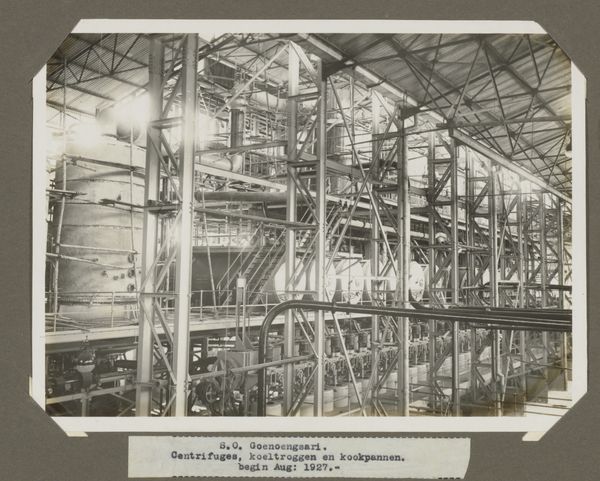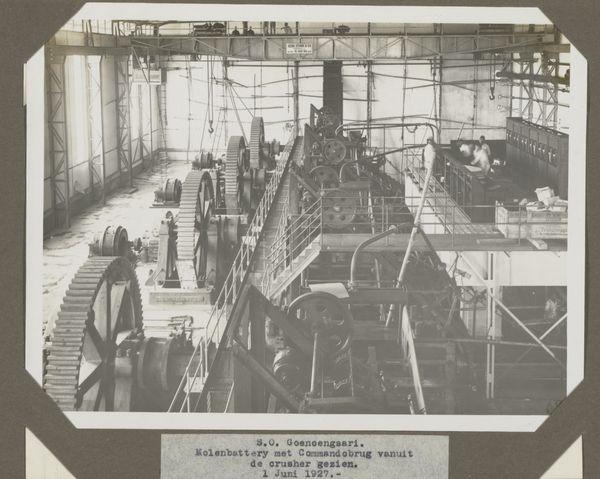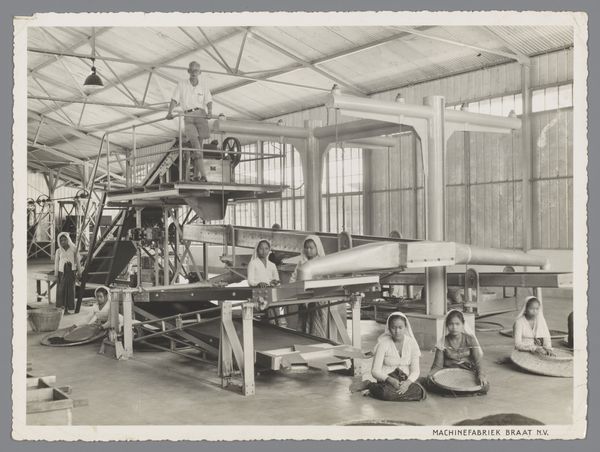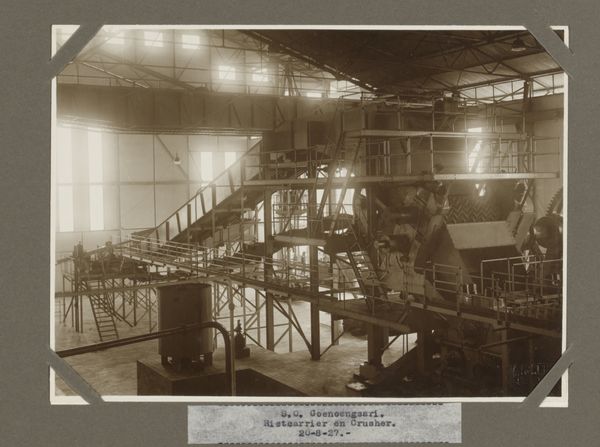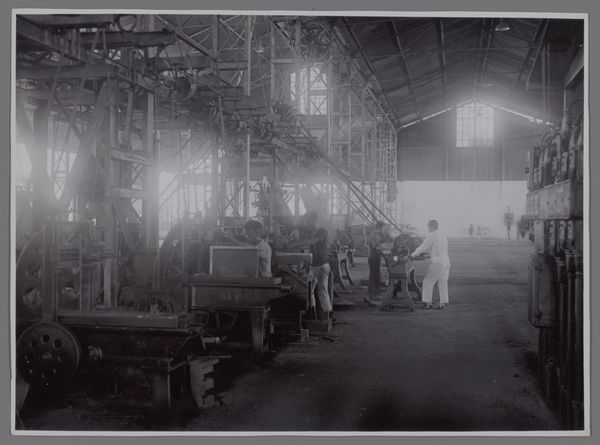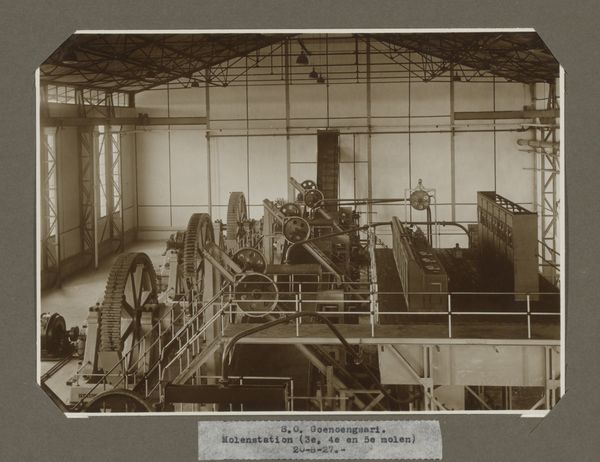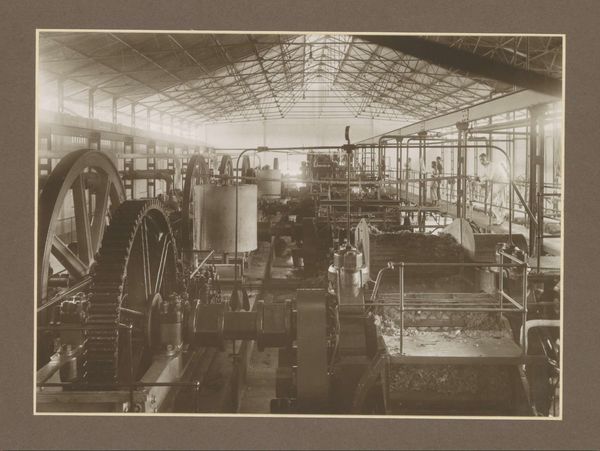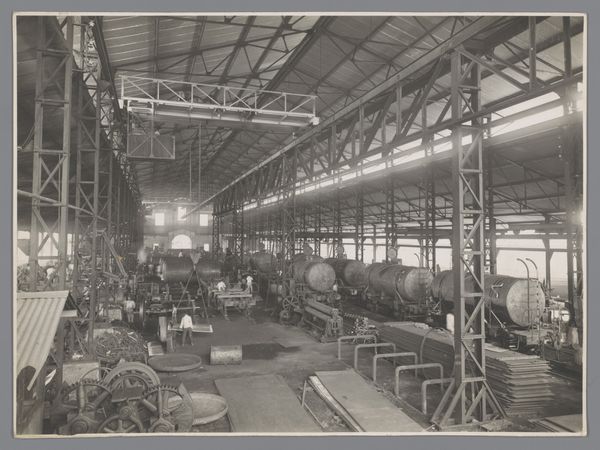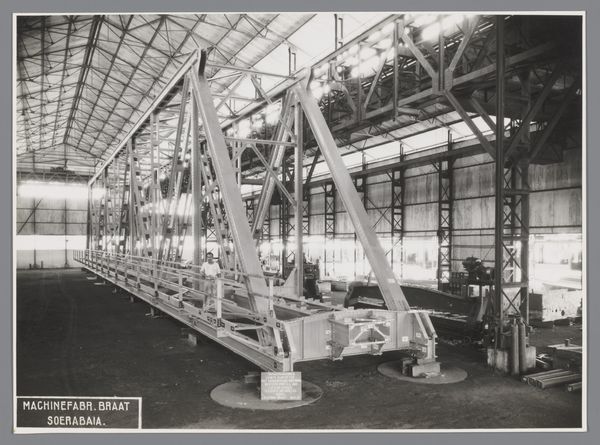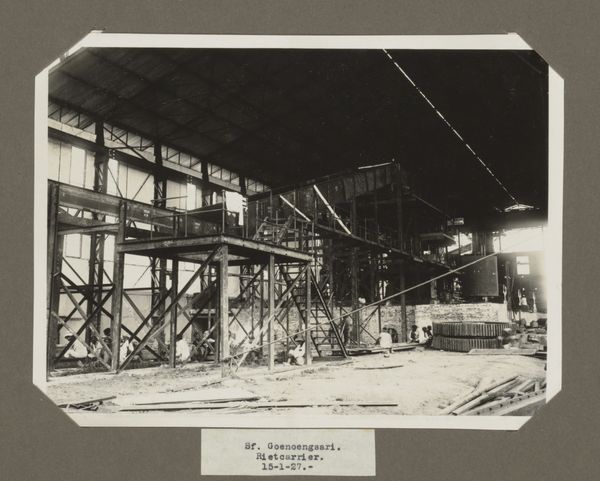
photography
#
street-photography
#
photography
#
realism
Dimensions: height 180 mm, width 237 mm
Copyright: Rijks Museum: Open Domain
Curator: Allow me to introduce this intriguing photograph from 1927. The title reads 'S.O. Goenoengsari. Molenstation. Juli 1927'. It resides here at the Rijksmuseum. Editor: The sheer scale of that machinery! It's visually arresting. The industrial forms are organized horizontally within the composition creating a strong sense of depth and mechanical repetition. It evokes the powerful aesthetics of industrialization. Curator: Precisely. The photograph offers a glimpse into a very specific industrialized labour context. This image invites us to reflect on the social impact of sugar production and colonialism in the Dutch East Indies. Editor: I see it as a study in lines and geometry. Notice how the strong verticals of the building’s architecture and machine supports contrast with the oblique angles of the conveyor system, while the rounded wheels and turbines interject soft contrasts. It presents an intriguing tension and creates visual balance. Curator: And note how photography itself functions within this context. The photograph normalizes and, to a degree, glorifies this industrialized labour. It invites us to ask questions about power dynamics. Who is operating these machines, and under what conditions? Editor: Interesting. Yet it is the complex interplay of shadow and light that pulls my gaze through each plane of visual information. The textures present from cast iron to steel is gorgeous, isn’t it? This interplay is well managed throughout the image. Curator: I'd agree about that the interplay; however, consider how it also highlights the dehumanizing aspects of industrialization, in a sense objectifying labour in this molenstation or milling plant, likely related to sugar production on the island. Editor: Perhaps both. Yet I find myself captivated by the photographer’s technical mastery of framing, particularly how the various elements compose. Curator: Thinking about that skill, the photographer frames not only this mechanical station but the framework of colonial systems that operated here. Food for thought, wouldn’t you agree? Editor: Absolutely! And a fitting observation on which to pause. Thanks for guiding us.
Comments
No comments
Be the first to comment and join the conversation on the ultimate creative platform.
